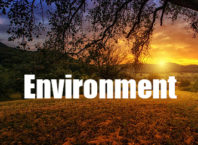A series of hearings in early January
will gather public opinions on a proposed pipeline that would
increase the amount of oil flowing across Minnesota by 225,000
barrels a day.
The line is called Sandpiper, and the
crude it would carry from North Dakota’s Bakken oil fields would be a
significant addition to the more than 2 million barrels of oil that
daily travel through underground pipelines bound for refineries in
the Twin Cities and beyond. Trains carry an additional half-million
barrels.
But the plan has raised concerns among
environmentalists and state agencies about potential risks to lakes
and rivers.
A project manager for Enbridge, the
Canadian company that wants to build the line, said the project is
necessary "because there’s a growing supply of crude oil in
western North Dakota, and it needs efficient, cost-effective and safe
transportation to get to the markets in the Midwest and the East in
the U.S. where it’s needed."
Bill Blazar, interim president of the
Minnesota Chamber of Commerce, voiced strong support, saying calling
the project "key to the development and growth of our state’s
economy."
"We’d be nuts not to support this
kind of infrastructure development," Blazar said.
Sandpiper would zigzag about 300 miles
across the state. Roughly three-quarters of the path would follow
existing utility corridors – to Enbridge’s terminal in Clearbrook,
in northwest Minnesota, and then south to Park Rapids before turning
east to the company’s hub in Superior, Wis.
Opponents say that route runs too close
to sensitive lakes and rivers, wetlands and wild rice habitat.
Richard Smith heads up the group
Friends of the Headwaters, which wants to keep Sandpiper away from
the headwaters of the Mississippi River.
"We’re not against the company
building the pipeline," Smith said. "We just think the
company should consider a different place for this pipeline so that
Minnesota’s water resources aren’t at risk."
That view is shared by the Minnesota
Pollution Control Agency and Department of Natural Resources. Both
agencies asked the Public Utilities Commission to consider alternate
routes that would skirt northern Minnesota’s lakes region.
In a letter to the utilities
commission, the MPCA wrote that the proposed route for Sandpiper
would cross 28 water bodies where there is no nearby access in case
of a possible spill.
The DNR wrote that the proposed route
crosses "a region of the state that contains a concentration of
important lakes for fisheries, trout streams, sensitive aquifers,
public conservation lands, and mineral and forestry resources."
Last September, in a step unprecedented
in the state, the utilities commission ordered a closer look at six
different route options. It was the first time the commission had
asked a pipeline company to consider a route completely different
from what it had proposed.
The Commerce Department then took a
broad look at the environmental impacts of those options. The
department’s analysis determined that Enbridge’s preferred route
crossed more wetlands and forested areas. But it also crossed the
fewest number of streams and avoided more cities and towns.
Friends of the Headwaters welcomed the
decision to analyze alternate routes, but filed suit asking for a
full-blown environmental impact study of the pipeline plan. The group
contended that the Commerce Department’s environmental analysis of
the alternate routes was inadequate and rushed. Smith said he thinks
"Minnesotans deserve the right to take enough time to do a full
analysis for where they want to put this pipeline."
Smith and others say the decision is
especially critical because there will likely be more than just one
pipeline. Enbridge has already announced plans to replace a different
line with a new pipe in the Sandpiper corridor. Craig Sterle, a
retired DNR forester and member of the group Carlton County Land
Stewards, says he expects it won’t end there.
"We believe that eventually, with
all the exploration and pumping that’s being done in the Bakken, and
up in Canada in the tar sands, there will be pressure for additional
lines," he said. "So there will be a large new corridor
cutting across Minnesota, and so we want to make sure it’s done in
the right place, and done the right way."
Enbridge officials believe their
preferred route is the right way.
The company worked hard to avoid lakes
in designing the pipeline route, said Project Director Paul Eberth.
According to an analysis conducted for the company by Barr
Engineering, "only about 3 percent of the lakes in the
watersheds that we cross have a hydrological connection to the
pipeline," he said.
Enbridge has negotiated easements with
92 percent of landowners along the route.
Eberth said many of the alternate
routes that veer west and south of the state’s northern lakes country
would cost more, and would potentially affect more cities and
streams.
"There’s more people that live
along that route," he said. "There’s also water features
that would be crossed — streams, creeks, waterways. Generally, a
lot of similar features that you see in northern Minnesota. The
density is less, but the length is longer, which still provides for a
potential to impact people."
Eberth said the state’s decision to
analyze alternate routes has set back the pipeline’s likely start of
service to 2017.
Dan Olson, with the International
Laborers Union in Superior, said his members are eager to get to work
on the project, which is expected to create 1,500 construction jobs.
"I’ve got a good workforce that has worked on the pipelines,"
he said. "They’re anxious to get going — but hopeful that it
will go through the right process so it’s done right."
Minnesota Public Radio News can be heard on MPR’s statewide radio network or online at mprnews.org.






